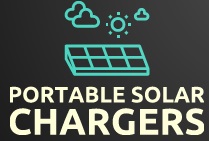Imagine you’re on an adventure in the wilderness, completely disconnected from civilization. You rely on your portable solar charger to keep your devices powered up, but suddenly, dark clouds start rolling in. Will your solar charger still work its magic on cloudy days? In this article, we’ll explore whether portable solar chargers are up to the cloudy day challenge and discover the science behind their functionality.
Can Portable Solar Chargers Work On Cloudy Days
The Basics of Portable Solar Chargers
Portable solar chargers have gained popularity in recent years as a sustainable and convenient way to generate power. These compact devices use solar panels to convert sunlight into electricity, which can then be used to charge various electronic devices such as smartphones, tablets, and cameras. The portability of these chargers makes them an ideal choice for outdoor enthusiasts, travelers, and individuals who want to reduce their carbon footprint.
How Solar Chargers Generate Power
To understand whether portable solar chargers can work on cloudy days, it is important to first know how they generate power. Solar chargers consist of several components, including solar panels, a charge controller, and a battery.
Solar panels, made up of photovoltaic cells, are responsible for converting sunlight into electrical energy. These panels contain layers of silicon that create an electric field when they come into contact with sunlight. This electric field generates an electric current, which is then directed to the charge controller.
The charge controller regulates the flow of electricity from the solar panels to the battery. It ensures that the battery is not overcharged, which can damage the battery, or undercharged, which can lead to inefficient usage of power.
The battery stores the electricity generated by the solar panels and provides a steady flow of power to charge electronic devices. This allows users to charge their devices even when there is no direct sunlight.
Factors Affecting Solar Charger Performance on Cloudy Days
- Cloud Coverage
The amount of cloud coverage is one of the key factors that affect the performance of portable solar chargers on cloudy days. The more clouds there are, the less sunlight is available for the solar panels to convert into electricity. Therefore, heavy cloud coverage can significantly reduce the charging capacity of solar chargers.
- Thickness of Clouds
Not all clouds are created equal when it comes to solar charging efficiency. Thick clouds, such as cumulonimbus clouds or heavy rain clouds, can block a significant amount of sunlight from reaching the solar panels. Thin and scattered clouds, on the other hand, may still allow a decent amount of sunlight to penetrate through and generate power.
- Temperature
Cloudy days are often associated with cooler temperatures. While solar panels can still function in low temperatures, their efficiency may decrease. Colder temperatures can lead to a slight reduction in the conversion of sunlight into electricity, resulting in lower charging capacity.
- Altitude
Altitude can also have an impact on solar charger performance on cloudy days. Higher altitudes tend to have thinner air and less cloud density, which can result in more available sunlight for the solar panels to convert into electricity. Therefore, solar chargers may perform slightly better at higher altitudes compared to lower altitude locations with the same amount of cloud coverage.
- Angle and Orientation
The angle and orientation at which solar panels are positioned play a crucial role in their performance. Solar panels should ideally be angled towards the sun to maximize sunlight absorption. When using portable solar chargers on cloudy days, it is important to adjust the angle and orientation of the panels to capture as much sunlight as possible, despite the lack of direct sunlight.
- Quality and Efficiency of Solar Panels
The quality and efficiency of the solar panels themselves can greatly impact the charging capacity of portable solar chargers on cloudy days. Higher-quality panels generally have a higher conversion rate, which means they can generate more electricity from the same amount of sunlight. Investing in a solar charger with high-quality and efficient solar panels can help improve its performance on cloudy days.
- Battery Capacity
The capacity of the battery used in a portable solar charger also affects its ability to function on cloudy days. A larger battery capacity allows for more energy storage, which means the charger can continue to supply power to electronic devices even when sunlight is limited. Choosing a solar charger with a higher battery capacity can help ensure continuous charging even on cloudy days.
- Charge Controller
The charge controller is another important component that can impact the performance of a portable solar charger on cloudy days. A well-designed charge controller will efficiently regulate the flow of electricity from the solar panels to the battery, maximizing the charging capacity even in low-light conditions. Opting for a solar charger with a reliable and high-quality charge controller can help optimize performance.
How Efficient are Portable Solar Chargers on Cloudy Days?
While the performance of portable solar chargers can be affected by cloudy days, they can still generate power and charge electronic devices even with limited sunlight. However, the efficiency of the charger will undoubtedly be lower compared to sunny days.
On heavily cloudy or rainy days, the charging speed may be significantly slower. This means that charging times for electronic devices could be longer or require additional time to reach full capacity. It is important to set realistic expectations for the charging capabilities of portable solar chargers on cloudy days and plan accordingly.
Potential Solutions for Improving Solar Charger Performance on Cloudy Days
- Using a Larger Solar Panel
One solution to improve the performance of portable solar chargers on cloudy days is to use a larger solar panel. A larger surface area means more solar cells, which can capture more sunlight even in low-light conditions. This can help compensate for the reduced solar energy available due to cloudy weather.
- Utilizing Multiple Solar Panels
Another option is to utilize multiple solar panels. Connecting multiple panels in parallel or series can increase the overall power output of the solar charger, providing more energy to charge electronic devices on cloudy days. This setup can also improve the charging speed and efficiency when sunlight is limited.
- Positioning the Solar Charger Optimally
Properly positioning the solar charger can significantly enhance its performance on cloudy days. Placing the charger in a location with the highest amount of available sunlight, such as an open area with minimal obstruction, can help maximize the absorption of sunlight. Additionally, angling the solar panels towards the direction of the sun can optimize their exposure to sunlight.
- Adding a Battery Backup
Integrating a battery backup system with the portable solar charger can provide additional power storage, ensuring a continuous supply of energy even during periods of limited sunlight. The battery backup system can store excess energy generated during sunny days and release it when sunlight is insufficient. This solution can help overcome the limitations of cloudy weather.
- Using a Solar Charger with Maximum Power Point Tracking (MPPT) Technology
Solar chargers equipped with Maximum Power Point Tracking (MPPT) technology can improve their performance on cloudy days. MPPT technology allows the charger to constantly track and adjust the electrical load to the optimum point, maximizing the power output even in low-light conditions. This technology helps ensure that the solar panels operate at their peak efficiency, even when sunlight is not fully available.
- Choosing a High-Efficiency Solar Charger
Opting for a high-efficiency solar charger can make a significant difference in its performance on cloudy days. Solar chargers with higher conversion rates can generate more electricity from the same amount of sunlight, increasing their charging capacity even when sunlight is limited. Investing in a quality solar charger with high efficiency can result in more reliable charging capabilities during cloudy weather.
- Optimizing Energy Consumption During Cloudy Days
During cloudy days, it is essential to optimize energy consumption to make the most of the available power from the solar charger. This can be done by reducing the usage of energy-intensive devices or prioritizing charging for essential electronic devices. By managing energy consumption effectively, users can ensure a more sustainable and efficient use of power during cloudy weather.
Conclusion
While portable solar chargers may have reduced performance on cloudy days, they can still generate power and charge electronic devices. Factors such as cloud coverage, thickness of clouds, temperature, altitude, angle and orientation of panels, solar panel quality, battery capacity, and charge controller efficiency all play a role in the overall performance of solar chargers on cloudy days.
By considering factors such as using larger solar panels, utilizing multiple panels, positioning the charger optimally, adding a battery backup, using MPPT technology, choosing high-efficiency chargers, and optimizing energy consumption, users can improve the charging capabilities of portable solar chargers during cloudy weather.
Despite their limitations, portable solar chargers remain a viable and environmentally friendly solution for charging electronic devices on the go. With careful planning and consideration, users can harness the power of the sun even on cloudy days.




